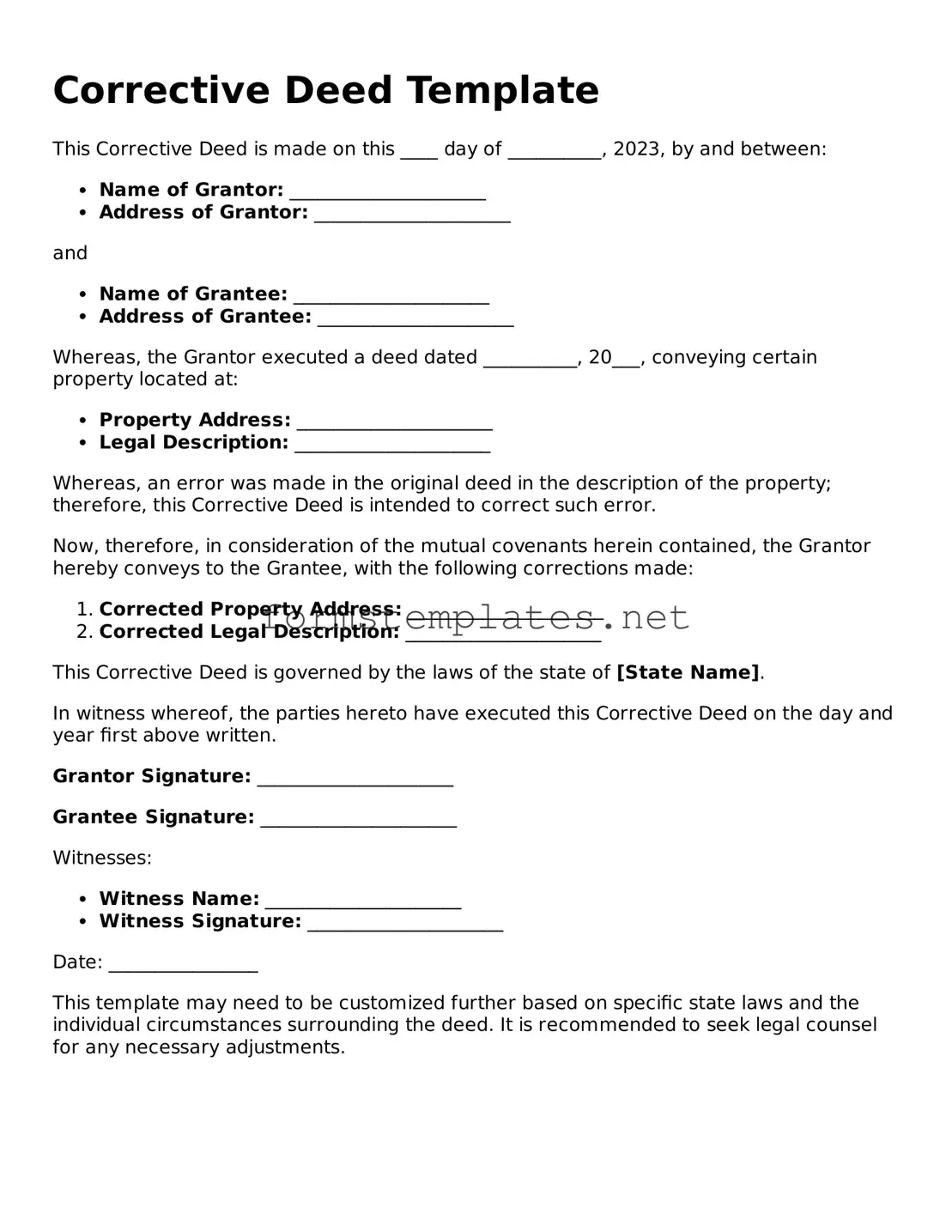Corrective Deed Template
This Corrective Deed is made on this ____ day of __________, 2023, by and between:
- Name of Grantor: _____________________
- Address of Grantor: _____________________
and
- Name of Grantee: _____________________
- Address of Grantee: _____________________
Whereas, the Grantor executed a deed dated __________, 20___, conveying certain property located at:
- Property Address: _____________________
- Legal Description: _____________________
Whereas, an error was made in the original deed in the description of the property; therefore, this Corrective Deed is intended to correct such error.
Now, therefore, in consideration of the mutual covenants herein contained, the Grantor hereby conveys to the Grantee, with the following corrections made:
- Corrected Property Address: _____________________
- Corrected Legal Description: _____________________
This Corrective Deed is governed by the laws of the state of [State Name].
In witness whereof, the parties hereto have executed this Corrective Deed on the day and year first above written.
Grantor Signature: _____________________
Grantee Signature: _____________________
Witnesses:
- Witness Name: _____________________
- Witness Signature: _____________________
Date: ________________
This template may need to be customized further based on specific state laws and the individual circumstances surrounding the deed. It is recommended to seek legal counsel for any necessary adjustments.
